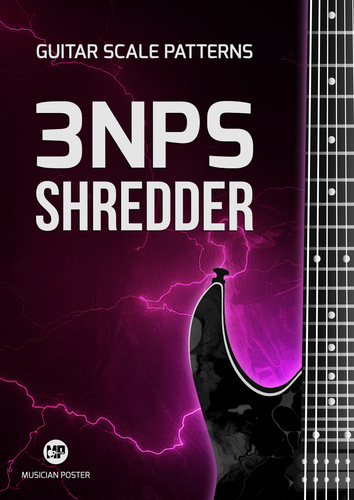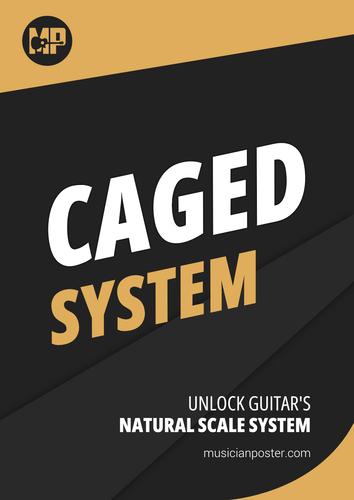Charts to help you learn the CAGED system and its 5 patterns for guitar.
Visual appearance
Fretboard diagrams are arranged diagonally to show you where the CAGED patterns line up. They are also aligned with the notes of the C-Major scale in particular. So, each of the 5 shapes will produce a full C-Major scale when you play it. The numbers inside the circles and squares represent intervals (scale degrees relative to the major scale). Squares represent scale root notes.One of diagrams has blank circles and squares—they represent notes from adjacent CAGED patterns.
Practical application
Root tones have a stronger visual emphasis to provide soloing landmarks and a better overview of the shape's primary "anchor points" to help you memorize and internalize all 5 patterns.
You can use variation with blank circles and squares to get yourself prepared for switching between the CAGED patterns. For example, you can occasionally "borrow" notes from the neighbouring CAGED pattern for a brief moment and then get back to the pattern you started with. This is basically a tool to break free from being stuck within one CAGED "box" shape.
These adjacent blank placeholders are given less emphasis on purpose—they should not distract you from the main pattern, but should you wish to temporarily visit (or peek into) a neighbouring pattern, then you can do that.
If, however, your specific aim is to practice alternation between all CAGED patterns then I recommend you also check out connected CAGED patterns of the Major scale with intervals.
Tip: Since these diagrams have intervals instead of specific note names you can view this chart as a recipe for any major scale, not just C-Major. The patterns will be identical for all major keys. For example, to get CAGED patterns for the G-Major scale you just need to align the E-shape's (pattern 1) root tone on the 3rd fret of the lowest 6th string (you can also align the G-shape with the 3rd fret of the 6th string, but then you'll have to play the pattern with open strings—not that you have to avoid it, but I'm just saying).
The order of CAGED patterns never changes, and it's the same as the CAGED-word is spelled. So for our G-Major example the next shape towards the guitar's bridge would be D-shape, and the previous shape towards the guitar's nut would be the G-shape.
Pro tip: One of the great benefits of being mindful of intervals as you play is that instead of hitting random notes that are simply "within" the scale you target specific tones of the scale (or chord) at a specific time that add a certain color (or flavor) to your playing, e.g. more consonant, or less consonant. That is only possible if you are aware of what relative degree you are playing and what effect each of its intervals has to the underlying harmony. And this is exactly what these diagrams can help you with.















0 Comments